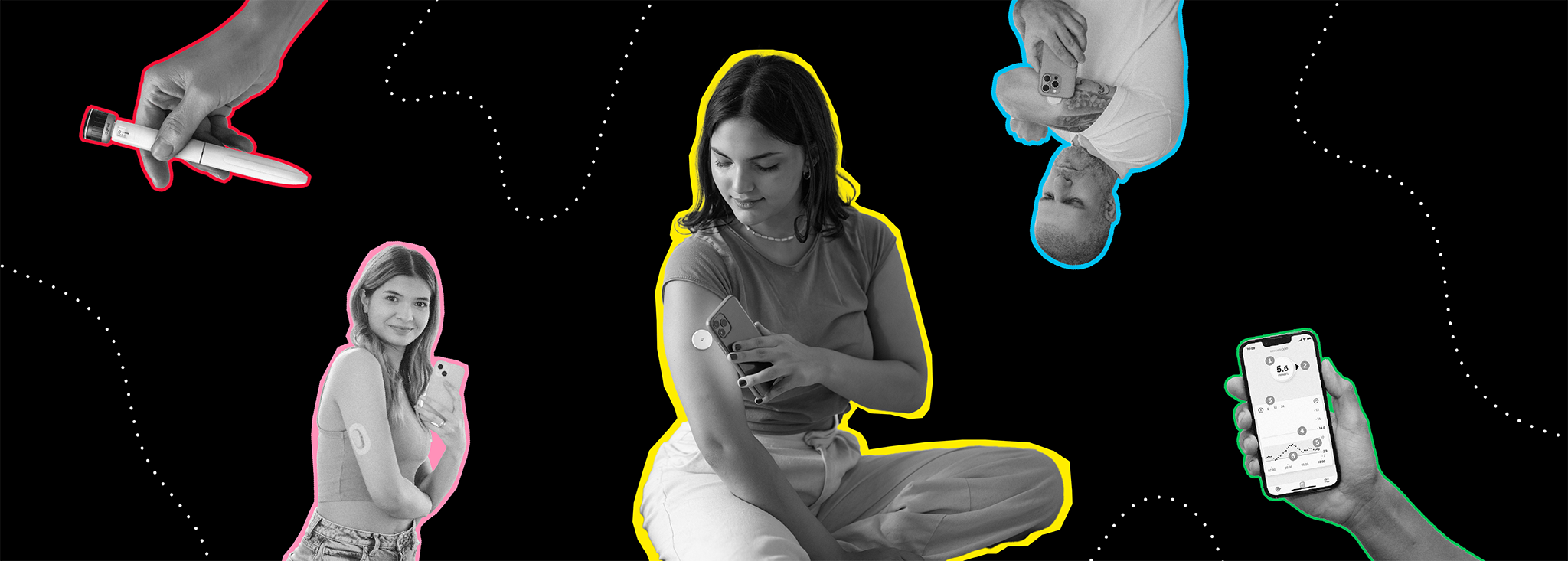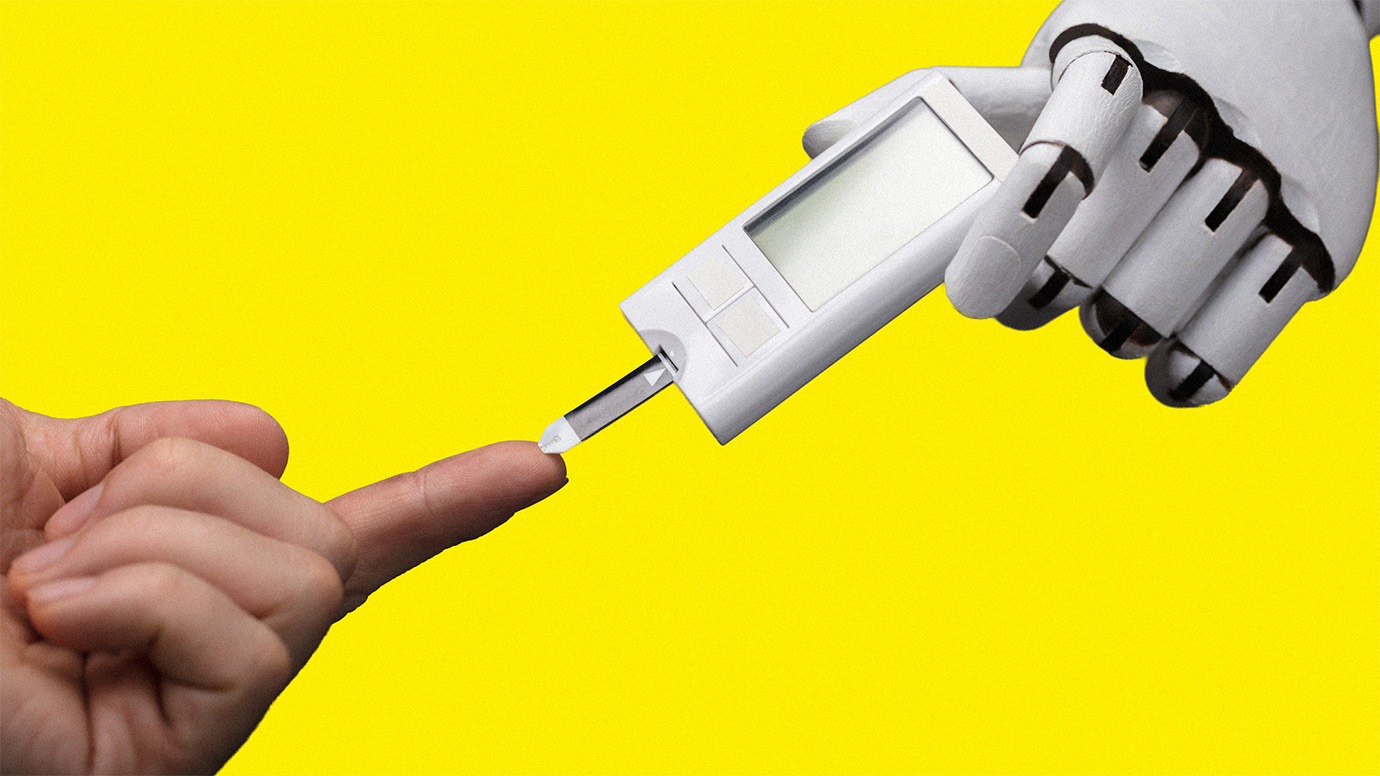How Technology for Diabetes Complications Transforms Care
Written by: Daniel Trecroci
11 minute read
May 20, 2025
Managing your or your loved one’s diabetes goes beyond managing blood sugar. It also means addressing potential complications of chronically high blood sugar, like nerve pain, heart disease, kidney issues, vision loss and foot problems. But here’s the good news: Technology for diabetes complications is advancing, providing devices that help manage pain and improve daily life.
In this article you will learn
- How spinal cord stimulation (SCS) blocks nerve pain before it reaches the brain.
- Why Medtronic’s Inceptiv™, Intellis™ and Vanta™ neurostimulators provide long-term relief for painful diabetic peripheral neuropathy (DPN) in the lower limbs.
- How Nevro’s HFX system™ delivers high-frequency therapy for painful diabetic neuropathy.
- How Boston Scientific’s Precision™ SCS System offers personalized relief by adjusting stimulation levels to improve comfort and mobility.
- Why Abbott’s Eterna™ SCS System uses innovative waveform technology to disrupt pain signals and enhance sensation for those with DPN.
- What makes Neuralace Axon Therapy™ a noninvasive, drug-free solution for nerve pain relief.
- How DyAnsys First Relief™, a wearable electrical stimulation device, provides extended pain management for DPN.
- What AI-powered and wearable diabetes technologies are emerging to improve care for complications such as heart disease, kidney issues, vision loss and foot problems.
Medtronic neurostimulators for diabetic nerve pain
DPN is a complication of diabetes. Chronic high blood sugar can harm nerves over time, causing burning pain, tingling and numbness— especially in the feet.
Neurostimulation devices work by blocking pain signals before they reach the brain, offering long-term relief without medication.
Medtronic offers three FDA-cleared neurostimulators to ease DPN pain:
- Inceptiv™ rechargeable neurostimulator: A medical device that helps manage DPN pain.
- Using closed-loop technology, it tracks nerve activity and senses each person’s unique body signals and adjusts pain treatment as needed.
- Intellis™ rechargeable neurostimulator: A small, adaptable device that tailors pain management to each patient.
- Allows users to fine-tune their relief with customizable settings.
- Vanta™ recharge-free neurostimulator. A medical device that helps manage chronic pain without the need for recharging.
- It delivers controlled nerve stimulation to provide long-lasting battery performance, helping you have more days of pain relief.
86% of patients with DPN using Medtronic’s technology experienced treatment success at 1 year and benefitted from clinically meaningful pain relief up to 10 years.
Risks include:
- Infection.
- Lead movement.
- Pain at the implant site.
- Loss of therapy effectiveness.
Not everyone responds to SCS in the same way, and your experiences may vary.
Patients with diabetes may have an increased risk for surgical complications.
Talk to your doctor about your ability to undergo surgery.
Click here to learn more about Metronic neurostimulators.
Abbott’s Eterna™ SCS System for DPN
Abbott’s SCS therapy provides a customizable approach to pain management for DPN.
With innovative waveform technology, it works to disrupt pain signals while promoting improved sensation in the affected areas.
Axon Therapy™: A noninvasive alternative for nerve pain
For those seeking drug-free pain relief, Axon Therapy by Neuralace Medical offers a noninvasive solution.
Axon Therapy is FDA-cleared and uses magnetic peripheral nerve stimulation (mPNS) to target damaged nerves and provide pain relief.
- Stimulates nerves gently: Axon Therapy does not require an implanted device and works externally.
- Drug-free: Provides a safe, drug-free way to ease nerve pain and reduce reliance on opioids.
- Improves neuropathy symptoms: Clinical trials have shown reductions in pain and numbness, with some patients reporting improved quality of life.
Boston Scientific Precision™ SCS System for DPN
Boston Scientific’s SCS system targets pain caused by DPN, delivering personalized therapy to help patients regain comfort and mobility.
By adjusting stimulation levels, it aims to reduce pain and improve overall quality of life.
DyAnsys First Relief™: Wearable electrical stimulation for DPN
- DyAnsys First Relief ™ is a wearable, FDA-cleared device designed to relieve diabetic nerve pain without surgery.
- It delivers continuous therapy for up to 56 days.
- Uses percutaneous electrical neurostimulation (PENS), which:
- Delivers low-level electrical pulses to pain-sensitive nerves.
- Helps reduce chronic pain over several weeks.
- Offers a convenient, noninvasive option for treating DPN.
Nevro HFX System™: Offering high-frequency relief
Unlike traditional neurostimulators, Nevro’s HFX system uses high-frequency (10 kHz) stimulation, which:
- Restores sensation in feet, helping patients feel more balanced.
- Improves sleep, reducing discomfort at night.
Technology for heart disease & stroke: Smart monitoring and AI-assisted prevention
- Wearable devices like Apple Watch and Fitbit track heart rate and activity, helping people detect early signs of heart issues.
- AI tools help medical professionals predict heart risks by analyzing blood pressure, cholesterol and glucose levels, suggesting preventive measures.
- Cedars-Sinai AI Tool analyzes heart images and clinical data to predict heart attacks and provides personalized risk assessments.
- The AI-enabled digital stethoscope interprets heart sounds using AI to detect valve disease and assess cardiovascular risks.
Technology for kidney disease: Early detection with smart blood and urine tests
- Home test kits now detect protein in urine, a sign of kidney damage.
- Healthy.io—Smartphone urine test for albumin detection.
- LetsGetChecked Kidney—Mail-in urine and blood test for kidney markers.
- Labcorp OnDemand Kidney Health—Home urine and blood test for early kidney disease signs.
- Also, AI-powered imaging scans analyze kidney function, allowing doctors to spot problems before they become severe.
Technology for eye problems: Smart retinal screening and implantable lenses
- Retinal imaging tools, like IDx-DR, use AI to screen for diabetic retinopathy, helping doctors diagnose it early.
- Implantable lenses improve vision for diabetes-related cataracts and glaucoma.
Foot problems & amputations: Smart socks and Pressure sensors
- Wearable tech like Siren Socks monitors skin temperature, detecting inflammation that could lead to ulcers.
- Smart insoles measure pressure points to reduce foot strain and prevent injuries.
The future of technology for diabetes complications
Looking ahead, new breakthroughs continue to reshape diabetes care.
- Noninvasive pain-relief options are expanding, reducing the need for medication or surgery.
- Ongoing research aims to make diabetes management easier and more effective.
Technology for diabetes complications is advancing, bringing better treatments, less pain and more independence.
FDA-approved neurostimulation and wearables offer real relief. Consult your healthcare provider for personal therapy recommendations.
Not all products discussed are FDA regulated; please consult a healthcare professional before use of any medical-related products.
This content was made possible by Medtronic Neuro, an active partner of Beyond Type 1. Beyond Type 1 maintains editorial control over its content.
INDICATIONS: Spinal cord stimulation (SCS) is indicated as an aid in the management of chronic, intractable pain of the trunk and/or limbs-including unilateral or bilateral pain.
CONTRAINDICATIONS: Diathermy – Energy from diathermy can be transferred through the implanted system and cause tissue damage, resulting in severe injury or death.
WARNINGS Sources of electromagnetic interference (e.g., defibrillation, electrocautery, MRI, RF ablation, and therapeutic ultrasound) can interact with the system, resulting in unexpected
changes in stimulation, serious patient injury or death. An implanted cardiac device (e.g., pacemaker, defibrillator) may damage a neurostimulator, and electrical pulses from the neurostimulator may cause an inappropriate response from the cardiac device. Patients with diabetes may have more frequent and severe complications with surgery. A preoperative assessment is advised for some patients with diabetes to confirm they are appropriate candidates for surgery.
PRECAUTIONS: Safety and effectiveness have not been established for pediatric use, pregnancy, unborn fetus, or delivery. Avoid activities that put stress on the implanted neurostimulation system components. Recharging a rechargeable neurostimulator may result in skin irritation or redness near the implant site.
ADVERSE EVENTS: May include undesirable change in stimulation (uncomfortable, jolting or shocking); hematoma, epidural hemorrhage, paralysis, seroma, infection, erosion, device malfunction or migration, pain at implant site, loss of pain relief, and other surgical risks. Adverse events may result in fluctuations in blood glucose in patients with diabetes. Refer to www.medtronic.com for product manuals for complete indications, contraindications, warnings, precautions and potential adverse events. Rx only.

Author
Daniel Trecroci
Dan has written about diabetes for more than 20 years. He was one of Diabetes Health's first hires. Throughout his 10+ years as Managing Editor, he wrote/published thousands of articles and helped establish Diabetes Health as the premiere resource for people with diabetes. He later became the Content Manager for OneTouchGold—Johnson & Johnson/LifeScan’s official digital publication for its metering technology customers. Under his leadership, OneTouchGold received the Web Marketing Association’s award for “Best Health & Wellness" web site. Dan has also written for the Diabetes Research Institute, dLife, diaTribe, Healthline, CareDx, Pendulum Therapeutics, and Hero Bread.
Related Resources

Living with diabetes can be challenging, but diabetes technology like smart insulin pens, continuous glucose...
Read more

Connected insulin pens (CIP)—or smart insulin pens—are any reusable injector pens that connect with an...
Read more

There are a lot of benefits to seeing and using your diabetes data on platforms,...
Read more

